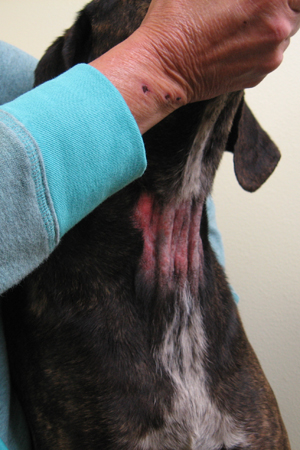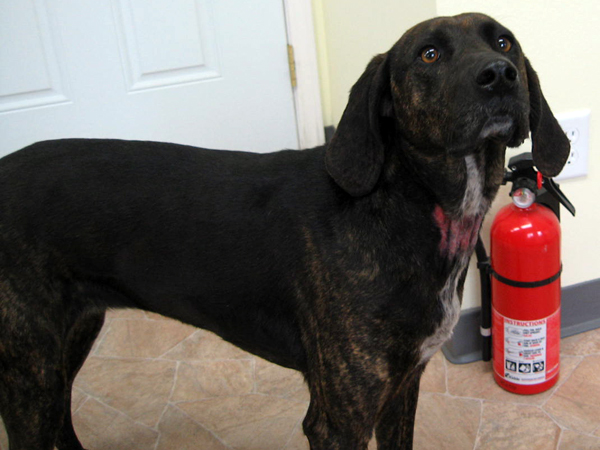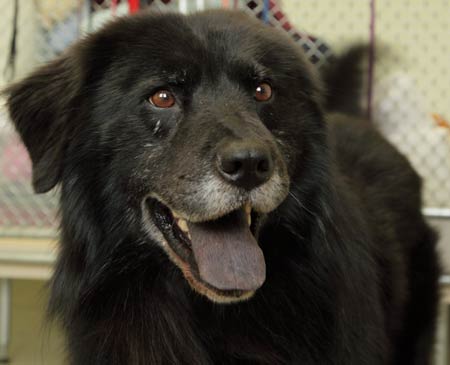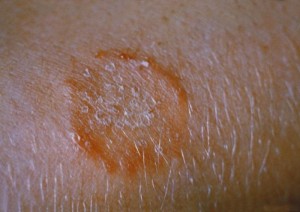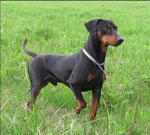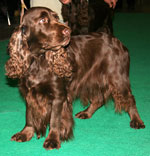
Yay, a new toy!
One key to making successful shelter dog placements is managing the expectations of their new people. Here is some information, gleaned from various websites and the personal experiences of our adopters and volunteers, which we like to share with each dog adopter before the day they bring their new family member home. Have other ideas to help make the transition easier? Send us a comment below! You can never have too much good advice.
Welcome home!
Finding the dog of your dreams may have been easy, but fitting a new canine friend into your household usually requires a little patience and time.
To make your dog’s transition as comfortable as possible, we recommend keeping your new dog on a leash or at your side at first. Show him where his water and food dish are kept. Show him where he is to sleep. When he is indoors be sure to keep him confined or with you, taking him outdoors at frequent intervals to relieve himself. Take him to the same spot each time and praise him heartily when he goes. Until he learns this new routine he will have to be watched closely. If there is an accident in the house please do not assume he is not housebroken. He must get accustomed to his new home and his new routines. However, if you catch him in the act of eliminating in the house, loudly say “NO!” and take him outside immediately. NEVER hit your dog if an accident occurs. Praise, not punishment, is the key to a well behaved pet.
The first couple of weeks you and your pet are “getting to know one another”; he doesn’t know why he has come to your home, nor what is expected of him. Please be patient with him and anticipate problems before they occur. Don’t leave tempting shoes, clothing, or children’s toys within reach of your dog.
When he’s first settling in, your dog may experience shyness, anxiety, restlessness, excitement, crying or barking. He may exhibit excessive water drinking, frequent urination, or diarrhea. His appetite may not be good. It is best to continue feeding the food your dog is used to from the shelter, and to slowly mix that food in with the food you and your veterinarian have chosen for your dog’s new regular diet. Until your dog is settled, try to give bits of his regular kibble as treats, rather than introducing new forms of treats that may upset your dog’s digestive system; new treats may be added slowly after the dog has settled into his new routine in your home. If your dog exhibits any medical symptoms that last more than a few days, take him to your veterinarian for evaluation.
Your new dog must learn a whole set of new rules. Be patient and be consistent. If you want him off the furniture, don’t allow him to sit on the couch “sometimes”. Don’t allow him to do something one time and forbid it another. There are numerous resources for training tips and methods, online and at your library. If you have access to obedience classes, they can be a great way to bond with your new dog and teach him what you want him to do – dogs just want to please you!
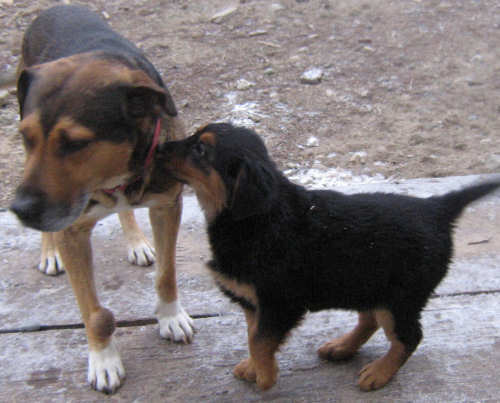
Meeting the Big Dog
INTRODUCING A NEW DOG TO A RESIDENT DOG
Introduce the dogs in a neutral location so that your resident dog is less likely to view the newcomer as a territorial intruder. Each dog should be handled by a separate person. With both dogs on a leash, take them to an area with which neither is familiar, such as a park or a neighbor’s yard. From the first meeting, you want both dogs to expect “good things” to happen when they’re in each other’s presence. Let them sniff each other, which is normal canine greeting behavior. As they do, talk to them in a happy, friendly tone of voice – never use a threatening tone of voice. Don’t allow them to investigate and sniff each other for a prolonged time, as this may escalate to an aggressive response. After a short time, get both dogs’ attention, and give each dog a treat in return for obeying a simple command, such as “sit” or “stay.” Take the dogs for a walk and let them sniff and investigate each other at intervals. Continue with the “happy talk,” food rewards and simple commands. Watch carefully for body postures that indicate an aggressive response, including hair standing up on the other dog’s back, teeth-baring, deep growls, a stiff legged gait or a prolonged stare. If you see such postures, interrupt the interaction immediately by calmly and positively getting each dog interested in something else.
Puppies usually pester adult dogs unmercifully. Before the age of four months, puppies may not recognize subtle body postures from adult dogs signaling that they’ve had enough. Well-socialized adult dogs with good temperaments may set limits with puppies with a growl or snarl. These behaviors are normal and should be allowed. Adult dogs that aren’t well-socialized, or that have a history of fighting with other dogs, may attempt to set limits with more aggressive behaviors, such as biting, which could harm the puppy. For this reason, a puppy shouldn’t be left alone with an adult dog until you’re confident the puppy isn’t in any danger. Be sure to give the adult dog some quiet time away from the puppy, and perhaps, some individual attention as described above. (Humane Society of the United States, 2009)
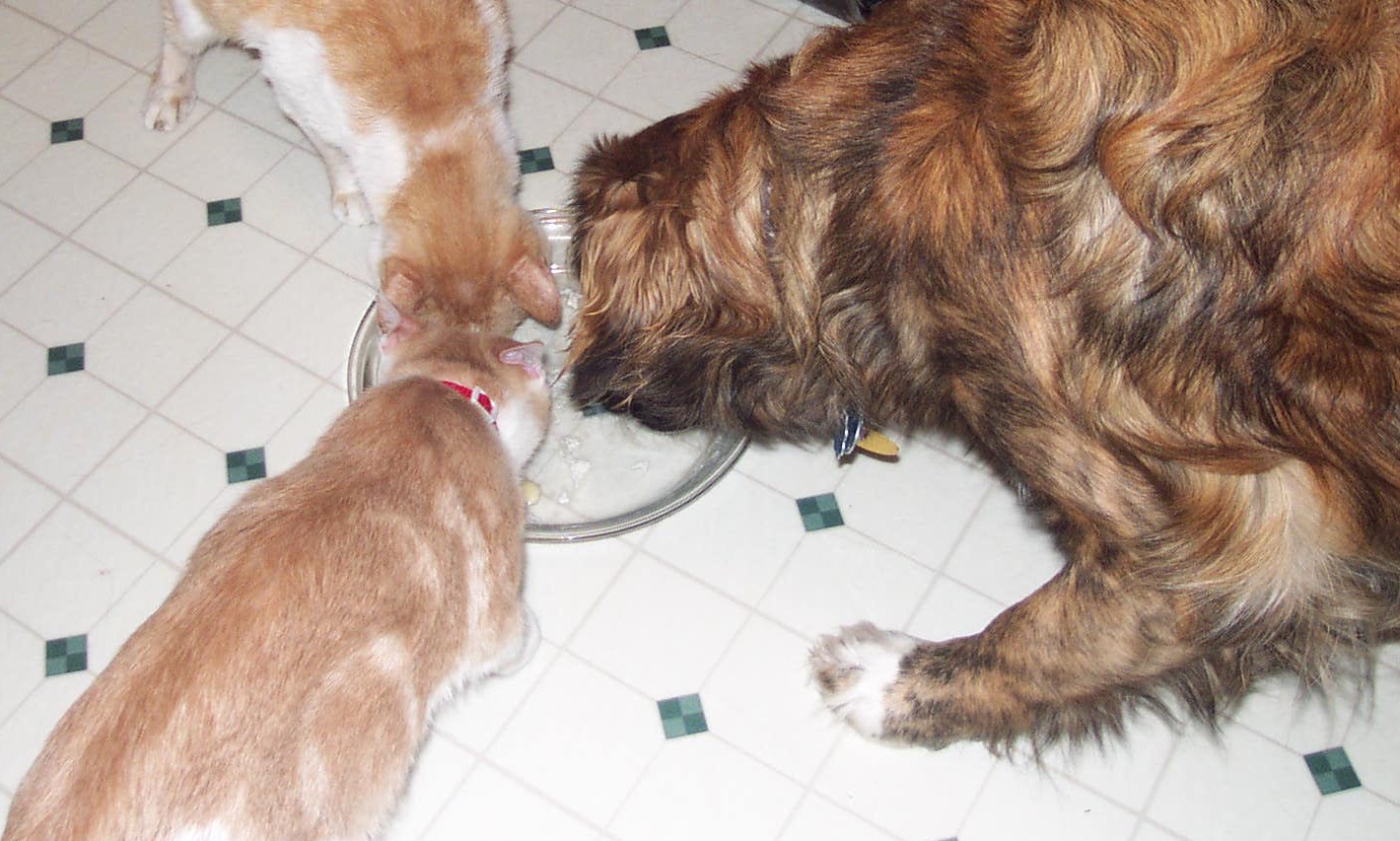
Fast Friends
INTRODUCING A NEW DOG TO A RESIDENT CAT
Be sure the dog is restrained on a firmly held short leash and the cat is free to escape; do not allow the cat to come within the dog’s biting range. If your dog guards its food, the cat may risk injury if it approaches the dog’s food, and it may be necessary to move the dog’s food or confine the cat. If the dog acts aggressively toward the cat, use corrective behavior techniques with the dog. Dogs can usually be trained to ignore, or even play with, cats. When you leave the house, separate the animals in physically, securely separated areas. Give each access to water, a bed or other suitable resting place, and some toys. Be sure the cat has access to a litter box. For the cat’s safety, make sure the cat has escape routes to get away from the dog. For example, a cat door leading to another room in the house and ledges on which he can easily jump. Always provide places where each animal can retreat for safety and privacy, a spot that is his or hers alone. A cat can use the top of the refrigerator; a dog can use a crate. (Fry, 2005)
HOUSETRAINING TIPS:
Consistency is the key. One well-received training method involves three different types of confinement.
1. When you will be at home, keep the puppy on a leash at your side at all times. Take him outside each hour, to your chosen “bathroom” area, and stay there for 5-10 minutes. If your pup goes, praise him enthusiastically and reward him with a treat. If he doesn’t go, just bring him back inside and keep him on the leash next to you; repeat the process in another hour.
2. When you will be away for short periods (1-2 hours for very young pups, 3-6 hours for older pups), confine the pup to his comfy crate with his favorite cuddly toy and a treat; make the crate a fun place for him, but make sure it isn’t large enough for him to choose one corner as his bathroom! He needs just enough room to stand up, turn around, lie down, and have small food & water dishes available. He will try VERY VERY HARD to not soil his crate if it is his “bedroom” and “kitchen” and doesn’t have room to be the “bathroom” too. Be sure to let the pup outside immediately when you return, and praise him and reward him when he goes (particularly if he tries to make it all the way to the designated spot in the yard).
3. When you must be away for a longer period, it is unrealistic to expect a young pup to “hold it” for 5, 8, or 10 hours. Instead, you must find a place where the pup can be confined to a cleanable area; many people use exercise pens on a bathroom, laundry room, kitchen or garage floor. Inside the pen, place newspapers across most of the floor space; put the puppy’s crate inside the pen, propped open, with a comfort toy and a treat, and put food and water dishes close to the crate; you have now created the bedroom, kitchen, and bathroom areas for the pup. As your pup gets better at this, gradually reduce the amount of floor that is covered in newspaper… your pup will eventually become so good at going only on the paper, that you can leave just one width of newspaper down and the pup will go there every time. (NOTE: adult dogs trained in this method can reliably be expected to seek out any newspaper they can find if they are left at home alone for a little too long; this can save your slippers in the long run).
If this method doesn’t work for you, there are many websites and books dedicated to different training methods – keep trying until you find one that works for you AND your new companion! Here’s a great web article: http://www.wikihow.com/Communicate-With-Your-Dog
Enjoy your new friend – here’s hoping you have many happy years to enjoy each other!
Bibliography
- Animal Match Rescue Team, Initials. (2011, May 15). Tips on adopting a dog. Retrieved from http://www.amrt.net/adoptdog.html
- Fry, J. (2005, September 25). Bringing a dog into a cat’s home. Retrieved from http://en.allexperts.com/q/Ask-Veterinarian-700/Bringing-dog-cat-home.htm
- Humane Society of the United States, The. (2009, November 3). Introducing a dog to other pets. Retrieved from http://www.humanesociety.org/animals/dogs/tips/introducing_new_dog.html
Image credits:
Fast Friends: Copyright © 2005 Sean Gillen, available under CC-BY-SA 3.0 Unported.

